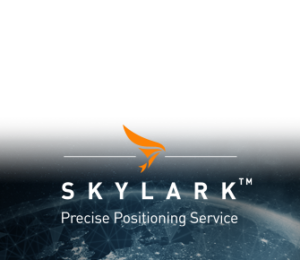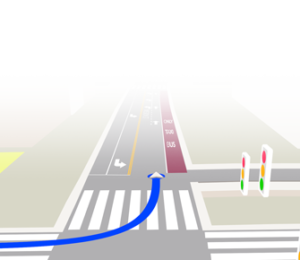New PolySync Core Driver for Swift Navigation’s Piksi Multi GNSS Receiver is Assisting in Paving the Way to a More Streamlined and Cost-Competitive Autonomous Driving Sensor Suite
SAN FRANCISCO, CA and PORTLAND, OR—(Marketwired – April 25, 2017) – Swift Navigation, a San Francisco-based startup building centimeter-accurate GPS technology to power a world of autonomous vehicles, has teamed up with PolySync, a leader that is building the tools and software infrastructure at the center of autonomous vehicle development. As a result of this technology-focused alliance, PolySync has built a driver for Swift Navigation’s flagship product, Piksi™ Multi. The driver is available now. To put their complementary technologies to the test, the companies entered multiple vehicles at the Self Racing Cars event at the Thunderhill West Track in Willows, CA on April 1-2, 2017, where the teams demonstrated autonomous driving on the two-mile track.
Swift recently shipped its newest product, Piksi Multi, a multi-band, multi-constellation high-precision GNSS receiver, perfectly apt for the autonomous vehicle market. Ushering in a new era of precision GPS affordability, Piksi Multi represents a revolution in centimeter-accurate GNSS capabilities for the mass market. Swift Navigation solutions utilize real-time kinematics (RTK) technology, providing location solutions that are 100 times more accurate than traditional GPS, at a fraction of the cost.
PolySync provides Core, a development framework and runtime system for autonomous car development that turns algorithms, sensors and actuators into plug-and-play apps. Software built with PolySync Core moves seamlessly between computers, teams, vendors and continents helping automotive OEMs and Tier 1 companies to get to market faster with one codebase from R&D to production. Swift Navigation’s Piksi Multi GNSS receiver is the latest pre-built driver in a suite of popular autonomous driving sensors from PolySync. When purchasing the PolySync Core middleware, this Piksi Multi driver is free.
“Piksi Multi and PolySync are quite literally paving the way for autonomous vehicles: Piksi Multi is making centimeter-level localization more accessible at an attractive price point, while PolySync is easing integration of sensors within the autonomous vehicle sensor suite with its PolySync Core and pre-built drivers, such as the new Piksi Multi driver,” said Timothy Harris, CEO and Co-Founder of Swift Navigation. “This allows integrators to focus on their own navigation algorithms and simplify development of self-driving cars, lowering barriers to entry to emerging automotive teams.”
“PolySync Core supports a wide range of sensors in the self-driving car industry, including cameras, radar, LiDAR and IMU,” said Josh Hartung, CEO and Co-Founder of PolySync. “We are thrilled to add Swift Navigation’s high-precision, centimeter-accurate GNSS sensor driver to our line of autonomous vehicle sensor drivers.”
PolySync and Swift Navigation ran three test vehicles at the Self Racing Cars event at the Thunderhill West Track in Willows, CA on April 1-2, 2017: PolySync drove its vehicles autonomously using open source car control (OSCC), and Swift’s $595 Piksi Multi GNSS Receiver performed on par with a Novatel product, sold at roughly 10x the price.
For Swift Navigation, the Self Racing Cars event was a great opportunity to test Piksi Multi functionality in a dynamic, real-world environment with multiple testing scenarios in three vehicles, including one from Swift and two from PolySync and its Udacity Self-Driving Car Engineering Student Team.
How PolySync managed the GNSS data lifecycle in the autonomous driving application:
- Piksi Multi calculated and sent data to PolySync Core
- The PolySync Core driver parsed, processed, abstracted and published the data to the Core bus
- The Udacity team’s PolySync node subscribed to the platform motion (GPS/IMU) data and image data from the PolySync Core bus
- The Udacity team’s node used the image data and the GNSS/IMU data to perceive the environment and predict the steering wheel angle and throttle position to accelerate the vehicle or brake pedal position to decelerate the vehicle
- The Udacity team’s node published control commands to the PolySync Core bus
- The OSCC node subscribed to control commands from the PolySync Core bus and translated them to actuation commands that were executed on PolySync’s Kia test vehicle.
“We used the Swift Navigation GNSS signal as part of our neural network solution for getting around the track. It performed great and had higher accuracy than expected,” said Anthony Navarro, Udacity Student and member of Team Soulless at the Self Racing Cars event.
Swift Navigation’s own test vehicle captured two sets of data, both times with human drivers. The first data set was collected at low speed to illustrate precise mapping of road boundaries. This type of data supports applications such as auto-steering. The second data set was collected to capture more generalized product performance data at higher rates of speed. Similarly, the PolySync test vehicle collected data using its new Piksi Multi driver and a team from Udacity’s Self-Driving Car Engineering program utilized the new Piksi Multi driver during the autonomous driving session on the racetrack.
Data from the Self Racing Cars event is available to the public through the Self Racing Cars event page at http://selfracingcars.com.
Swift Navigation recently commissioned an infographic outlining the current state and future of autonomous driving. It can be found here.
ABOUT SWIFT NAVIGATION
Swift Navigation, Inc. was founded in 2012 to make GPS positioning technology more accurate and affordable. Today Swift Navigation has gained a reputation for defining a new category of GNSS systems as the industry’s first low-cost, high accuracy real-time kinematics (RTK) receiver. Its GPS and GNSS positioning products are available a fraction of the price of the competition and deliver 100 times better accuracy than the GPS in a cell phone. Swift Navigation’s technology benefits a multitude of industries and applications—including autonomous vehicles, unmanned aerial vehicles (UAVs), precision agriculture, robotics, surveying and space. With its innovation and technology honored by Inc.’s 2016 and Forbes 2017 30 Under 30 lists, Swift Navigation is enabling a world where fields farm themselves, drones fly safely and autonomous transportation can take you home. Learn more online at swiftnav.com, follow Swift on Twitter @Swiftnav
ABOUT POLYSYNC
PolySync Technologies singular vision is to simplify and accelerate the development of self-driving cars. Founded in 2013, the company has developed a platform that enables automakers and autonomous vehicle startups to seamlessly build, test and deploy safe autonomous vehicle applications with minimal time and resource waste. PolySync products have been used by companies from startups to Fortune 500s to develop their most advanced vehicle technology. Our team is building the future of the software-defined car in Portland, OR and Detroit, MI. Learn more online at polysync.io and follow PolySync on Twitter @PolySync.




